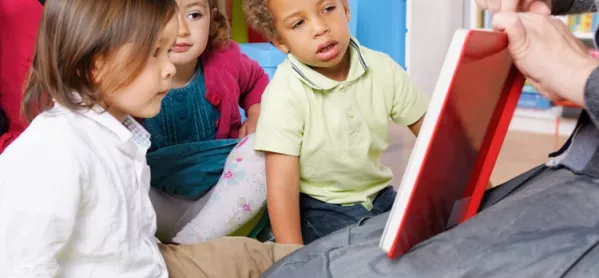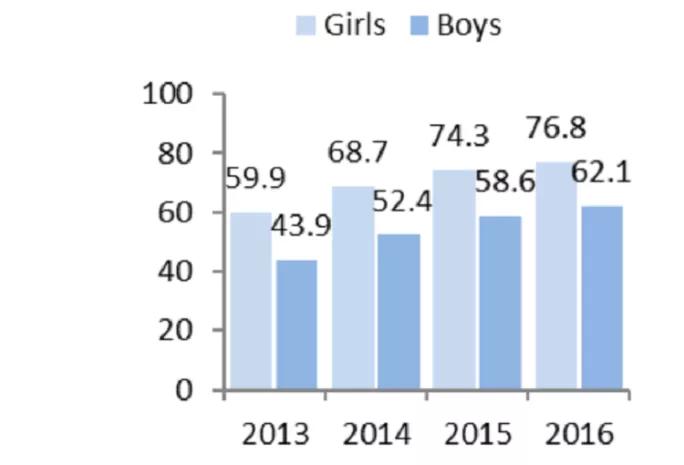The percentage of children who are achieving the government’s early years benchmark has increased, figures released this morning show.
In 2016, 69.3 per cent of children were at a good level of development by the end of their Reception, compared with 66.3 per cent in 2015, according to the statistics published by the Department for Education.
Source: DfE SFR 50/2016
To be assessed as having a good level of development, children must meet expectations in 12 of the 17 areas in which they are assessed, under the early years foundation stage profile - including being able to count to 20 and read simple sentences.
The early years foundation stage profile was due to be made non-statutory in 2016-17, but after the government scrapped baseline assessments it decided to keep the assessment in place and yesterday it announced that it would also remain in place for 2017-18 , while a review of primary asssessment is carried out.
Today’s statistics also reveal that:
1. Girls do better than boys in all 17 aspects of the early years foundation stage profile. But the gender gap for the percentage of children achieving a good level of development has closed as boys have improved faster than girls.
The percentage achieving a good level of development:
Source: DfE SFR 50/2016
2. The gender gap is largest in writing, where just 65.9 per cent of boys achieved at least the expected level - being able to write a simple sentence, with some words spelled correctly - compared with 79.7 per cent of girls.
3. The gender gap is smallest for technology, where the goal is for pupils to be able to select and use items such as a camera or phone, where 91.2 per cent of boys and 93.8 per cent of girls reach the expected level.
4. The gap between all children and the lowest 20 per cent of attaining children has closed, according to the statistical definition used by the DfE: the median point score for all children was 34 in both 2015 and 2016, but the mean average point score for the lowest 20 per cent of attaining children has improved from 23.1 in 2015 to 23.3 in 2016.
Want to keep up with the latest education news and opinion? Follow TES on Twitter and like TES on Facebook






